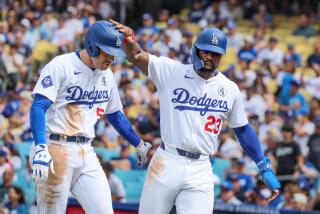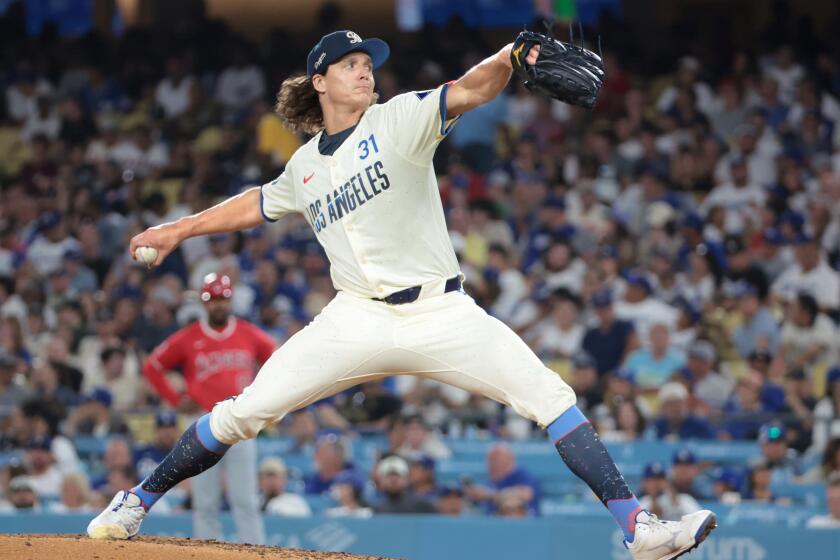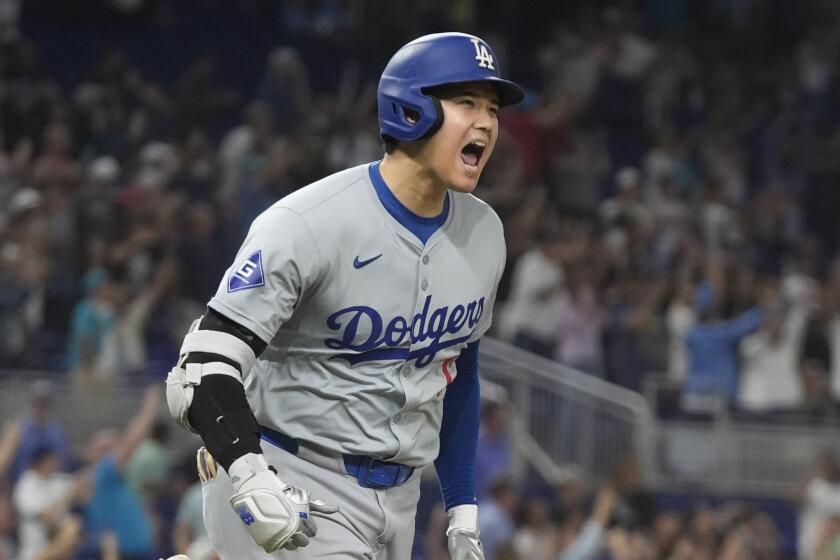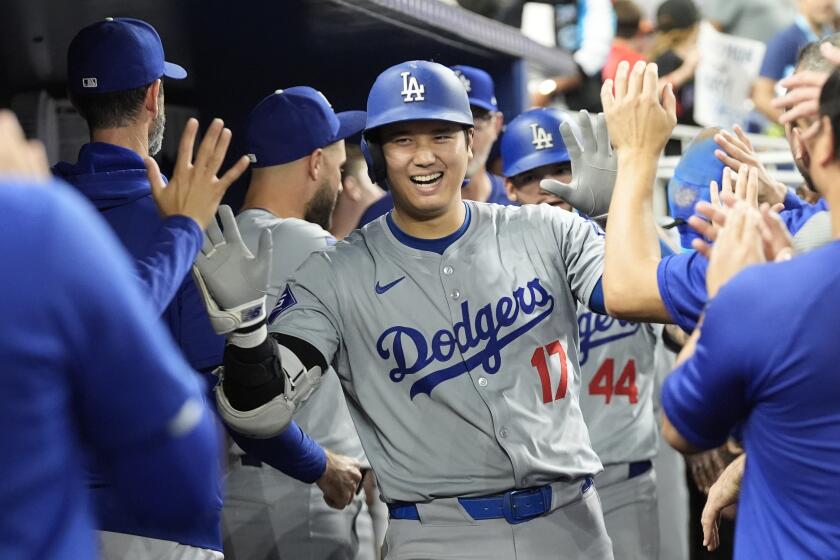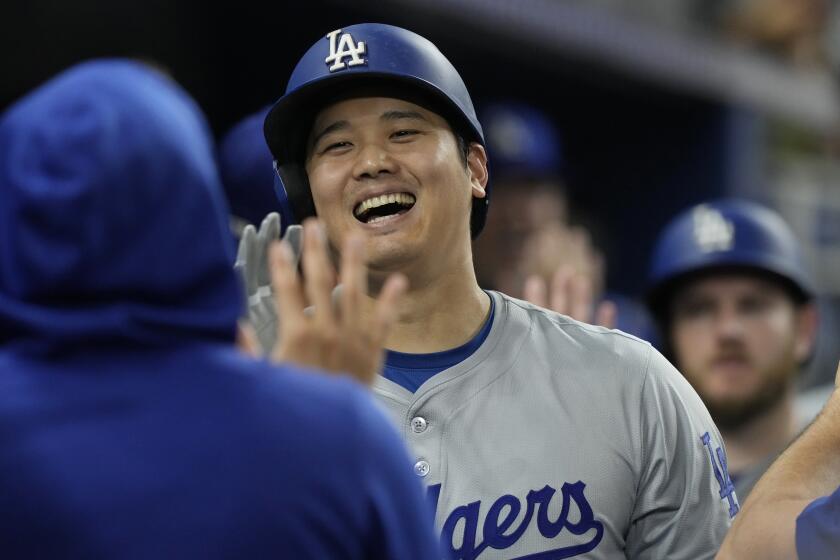Baseballs are flying out at Dodger Stadium
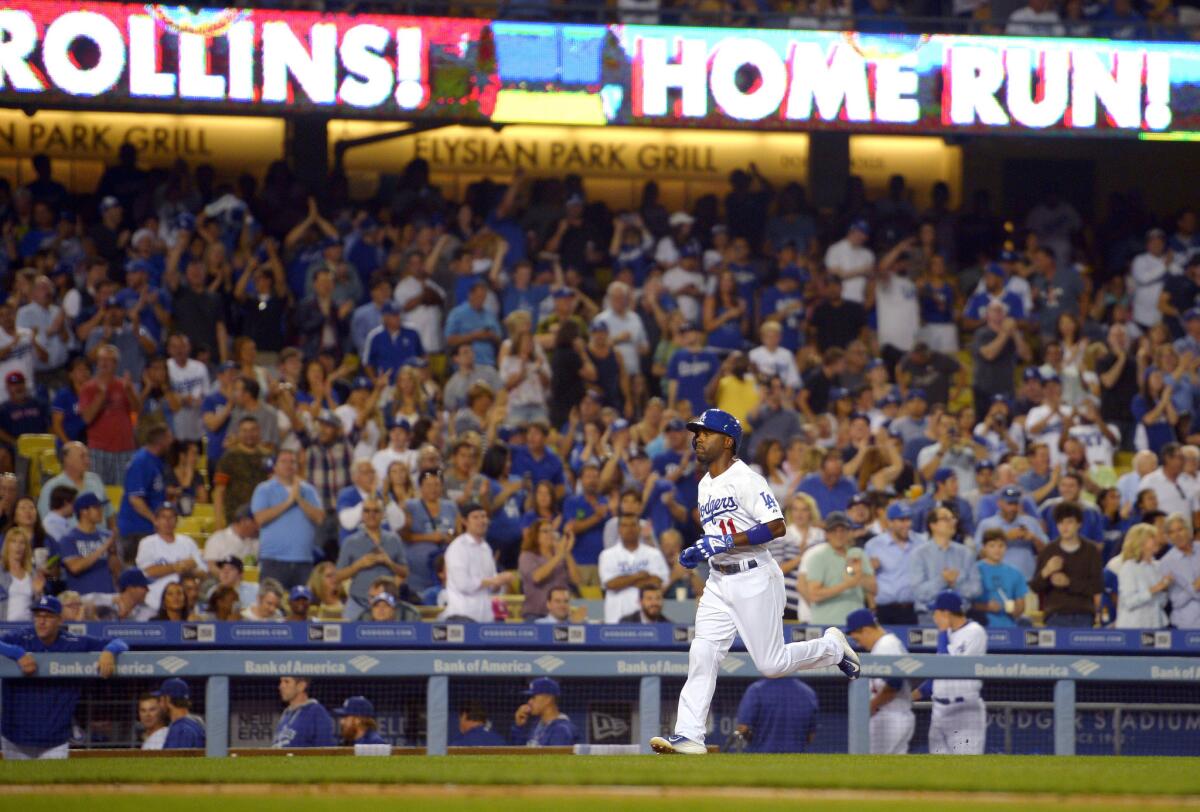
Dodgers shortstop
Dodger Stadium has suddenly turned into Colorado’s Coors Field, or so it seems.
What has long been considered a pitcher-friendly ballpark, one credited for enhancing the earned-run averages of everyone from Sandy Koufax to Orel Hershiser, is already the site of 33 home runs this season, tied for the most in baseball through Wednesday. Only Baltimore’s Oriole Park in Camden Yards had seen as many.
The average of 2.75 home runs a game at Dodger Stadium was second in the National League to Great American Ball Park in Cincinnati, according to ESPN’s Home Run Tracker.
The increased frequency of home runs is noticeable enough to have turned Don Mattingly into an amateur scientist, with the Dodgers manager jokingly theorizing that global warming could be partially responsible for the trend.
Outfielder Andre Ethier thinks there might be something to that.
The team’s longest-tenured player, Ethier has 97 home runs at Dodger Stadium over his decade-long career. The most recent came Wednesday during a 7-3 victory over the San Francisco Giants in which four other players also homered.
“The state’s so dang dry because of the drought,” Ethier said.
In previous Aprils, Ethier said it was normal for there to be dew on the stadium grass and dugout railings late in games. No more.
“There’s no moisture,” he said.
The absence of moisture, Ethier believes, allows baseballs to travel greater distances.
Other players were skeptical. Told of Mattingly’s global-warming theory, shortstop Jimmy Rollins doubled over with laughter.
“Whatever Donnie says,” Rollins said.
Adrian Gonzalez, who leads the team with eight home runs, was also skeptical.
“Everybody can have their theories,” Gonzalez said with a smile. “I am not a scientist to know if there is global warming or not.”
Gonzalez offered another explanation: “It could be that we’re hitting it better.”
The Dodgers’ 32 home runs led the majors through Wednesday.
Months ago, Gonzalez predicted something like this could happen, pointing to how the additions of players such as catcher Yasmani Grandal (15 home runs last season) and second baseman Howie Kendrick (seven) offered incremental gains in power at positions where there was previously little to none. Gonzalez believed this could help offset the departures of Hanley Ramirez and Matt Kemp.
The power has been as spread out as Gonzalez imagined. Five Dodgers have three or more home runs, including Alex Guerrero, who has five, and Joc Pederson, who has four.
Pitcher Zack Greinke sided with Gonzalez.
“I don’t think it’s the park,” Greinke said. “It’s the team.”
Greinke served up a home run to Brandon Crawford of the San Francisco Giants on Wednesday and he didn’t think it was park-aided.
“Crawford hit that ball pretty well,” Greinke said.
Roster move
The Dodgers spent another $20,000 on a waiver claim Thursday, this time to acquire left-hander Eury De La Rosa from the Oakland Athletics.
De La Rosa, 25, will be assigned to triple-A Oklahoma City. De La Rosa’s major league experience is limited to 44 relief appearances he made for the Arizona Diamondbacks from 2013-14. De La Rosa was 2-1 with a 4.21 earned-run average.
To clear a place for De La Rosa on the 40-man roster, the Dodgers transferred Brandon McCarthy to the 60-day disabled list. McCarthy, who was signed to a four-year, $48-million contract in the off-season, was scheduled to undergo reconstructive elbow surgery Thursday morning.
Up next
Carlos Frias (1-0, 0.00 ERA) will face the Arizona Diamondbacks and Rubby De La Rosa (2-1, 4.68) at Dodger Stadium at 7 p.m. On the air: TV: SportsNet LA; Radio: 570, 1020.
Twitter: @dylanohernandez
More to Read
Are you a true-blue fan?
Get our Dodgers Dugout newsletter for insights, news and much more.
You may occasionally receive promotional content from the Los Angeles Times.



